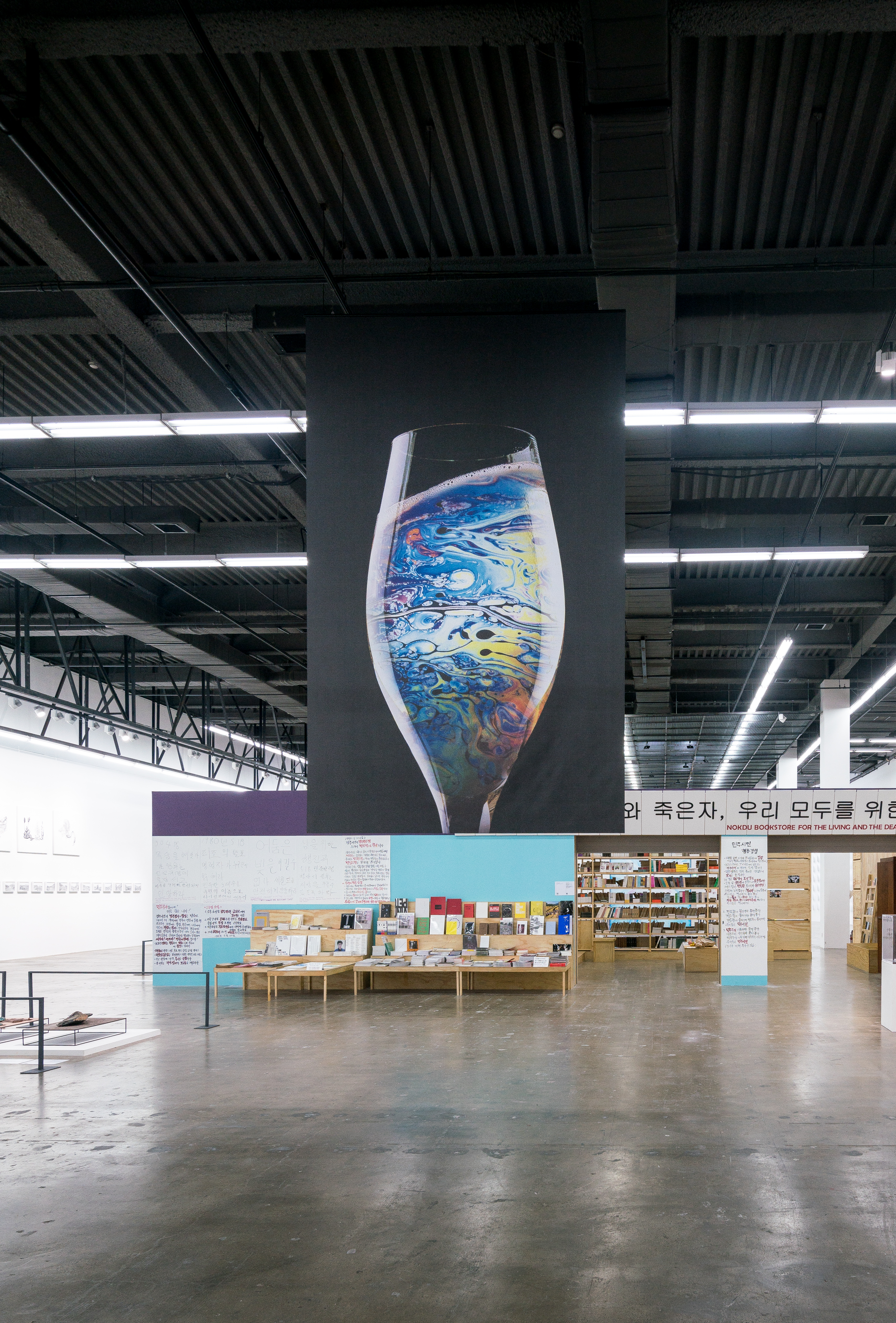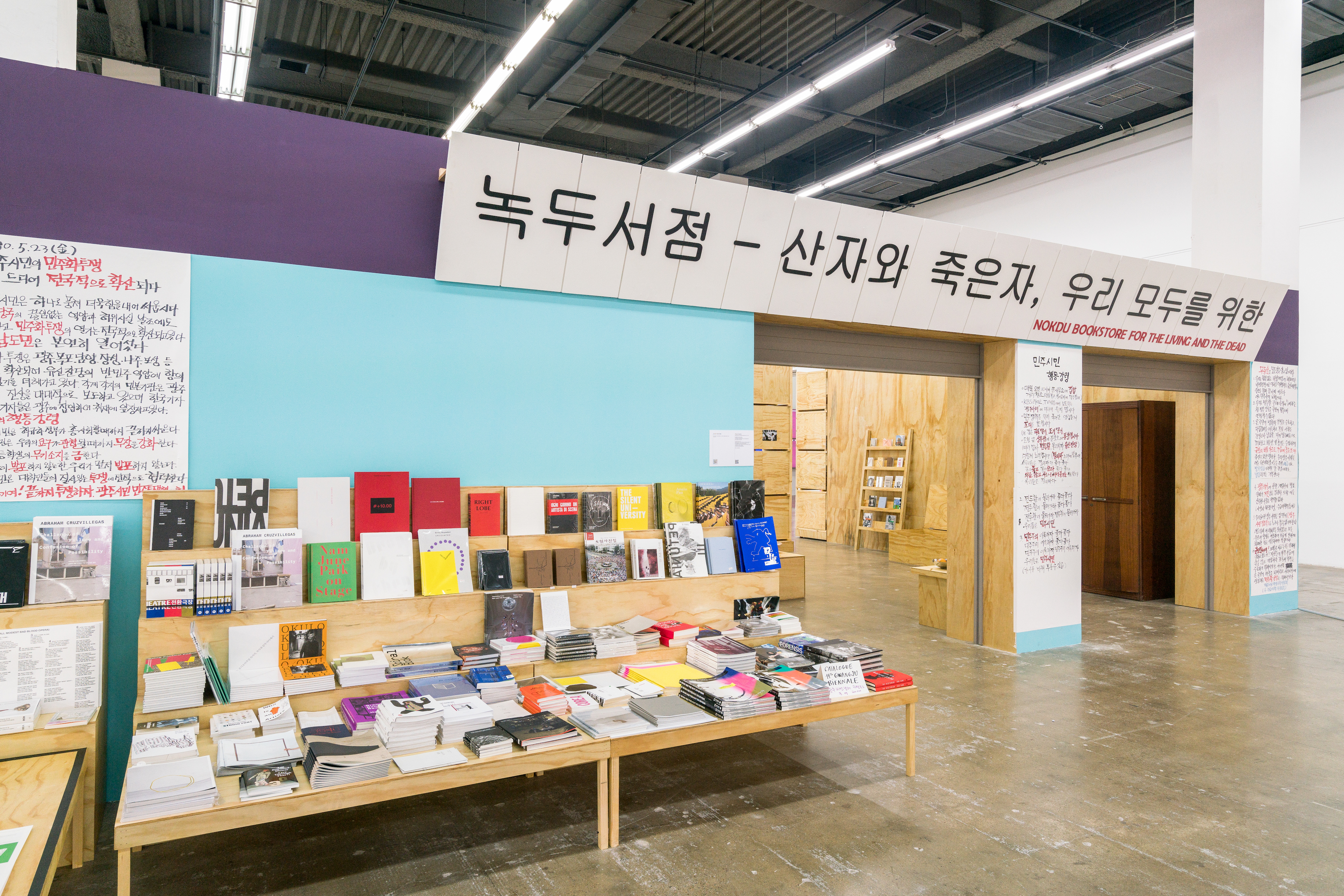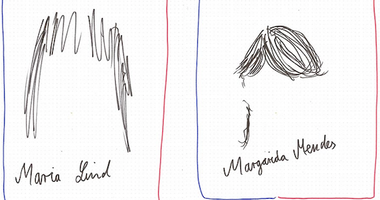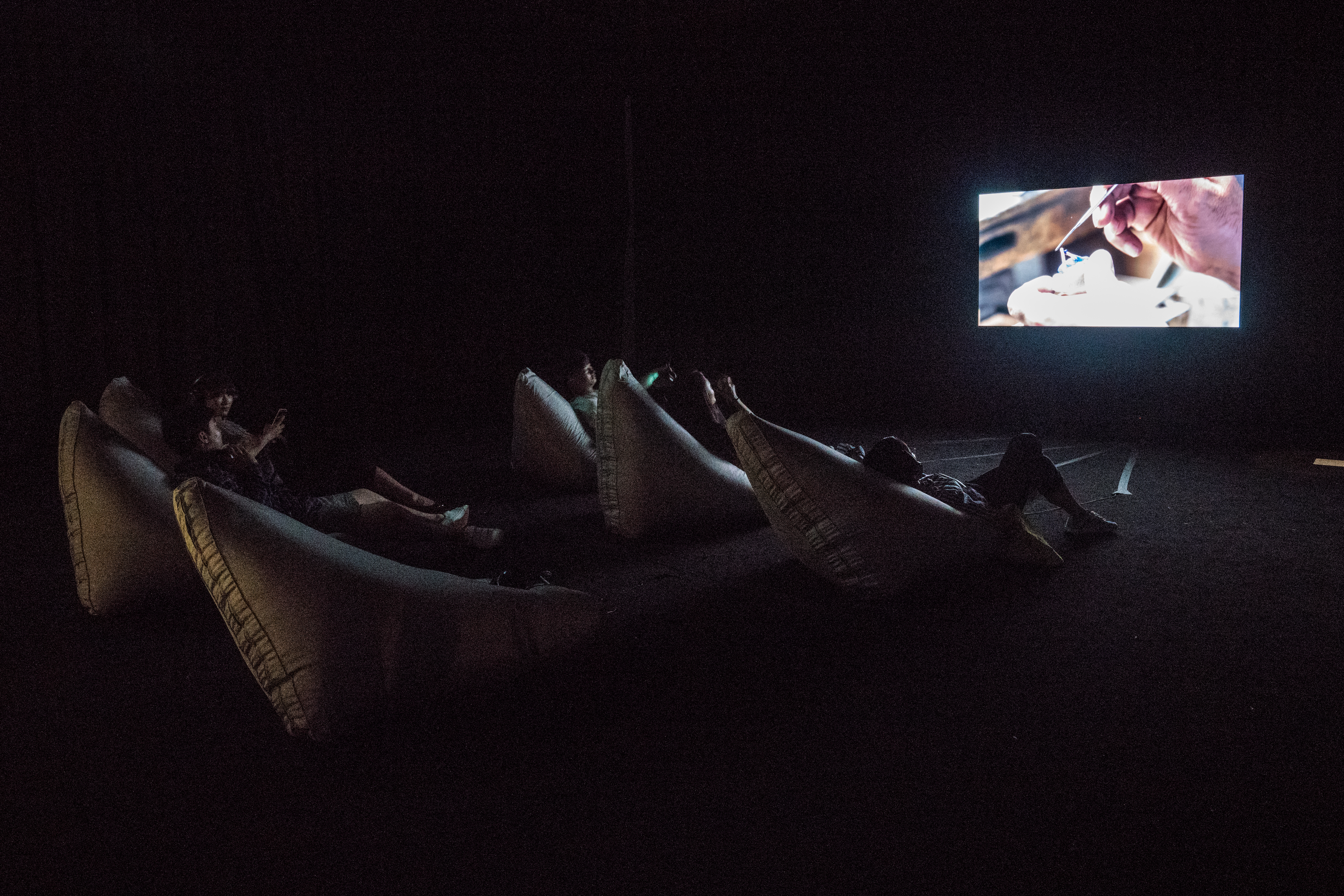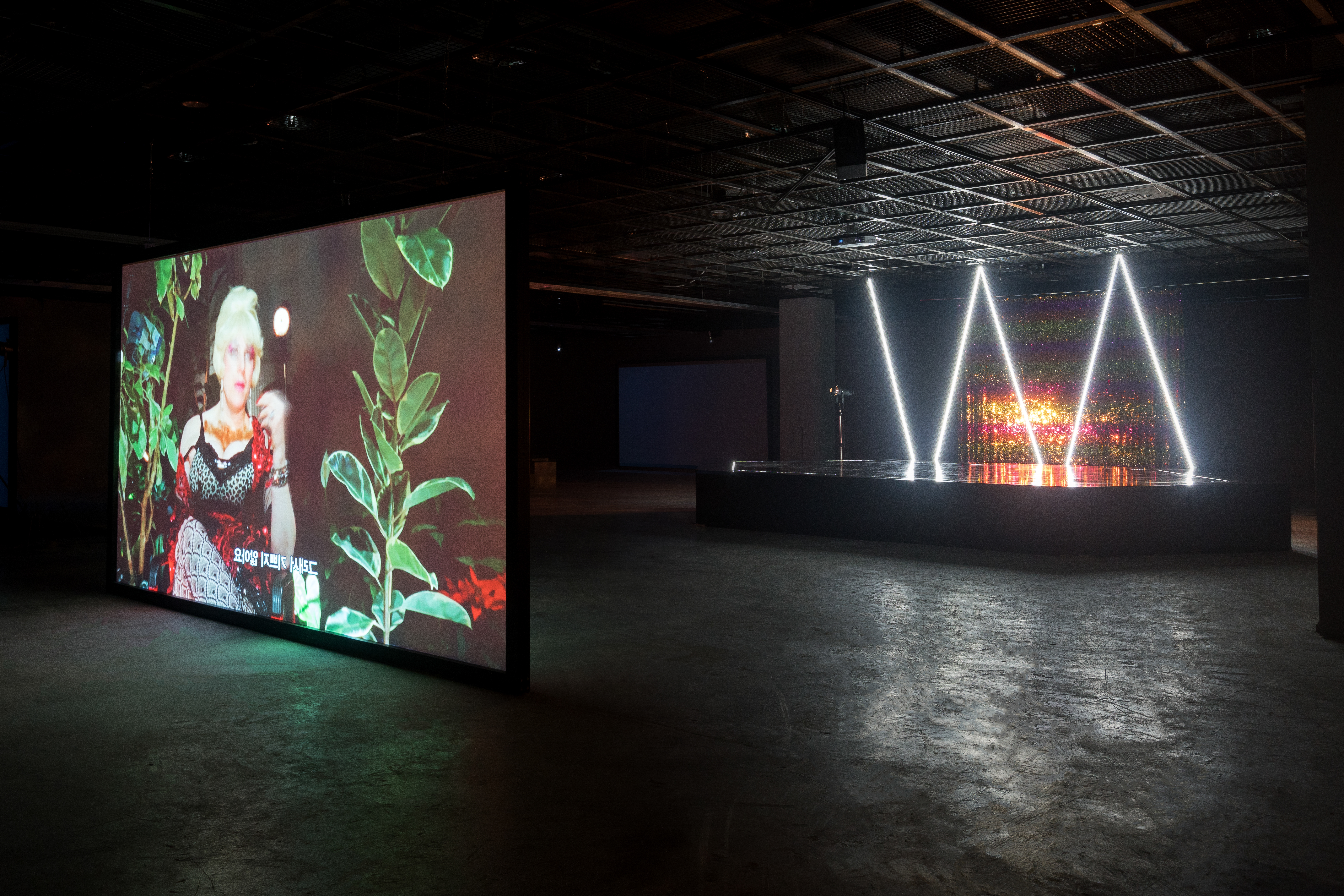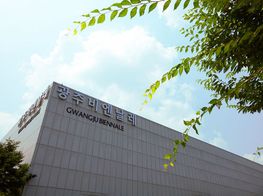The Eighth Climate (What Does Art Do): the 11th Gwangju Biennale
Dora Garcia, Nokdu Bookstore for the living and the dead (2016). Image courtesy Gwangju Biennale.
I visited the 11th Gwangju Biennale on a quiet Sunday in late September, after the press conferences, walkthroughs, and convergences of the opening days had long passed.
Centred at the Gwangju Biennale Exhibition Hall, an 8100-square metre complex set within Jungoui Park, the exhibition also expands out into several satellite locations in cultural institutions and public spaces (and of course, on the Internet). At the Exhibition Hall, the curators' presence remained in the form of comprehensive mediation.
Upon walking into the first of five large, open-plan rooms, several young assistants pointed to a sign encouraging the downloading of a QR scanner to access a guided tour. Most of the wall labels are accompanied by a QR code, which connects to a site from which a digital voice is streamed, affectlessly reading from an extrapolated curatorial comment. It's a bit fussy, scanning code by code, the voice is hard to listen to more than a few times, and explanations can be overwrought, but it reflects a real willingness to educate, one that comes out in other facets of the project: there are two catalogues, and the edition's website is unusually thorough.
And otherwise, there's no soft entry into the space. Walking into Gallery 1, there are immediately dozens of works in fore-middle-and background view, in the air and on the floor, a mixture of the visually loud (Ruth Buchannan's commissioned pink and green chain curtains, Split, Splits, Splitting (2016) and Agnieszka Polska's digital print Glass of Petrol (2015)), and subdued (Ade Darmawan's black and white prints featuring mutated life forms, Old Colony (2012) and New Working Bee (2012); and Joy in Paperwork (2016) a wall of abstract drawings on A4 paper, made by Amalia Pica using bureaucratic stamps from around the world).
Anchoring the relative chaos is Dora Garcia's Nokdu Bookstore for the living and the dead (2016) a commission for this year's Biennale that reconstructs Gwangju's Nokdu Bookstore, which was a critical meeting point for organisers of the 1980 Gwangju Uprising which spurred the establishment of Korea as a democratic republic. The large wooden structure does the double duty of introducing this history, which the first Biennale in 1995 was erected to commemorate, and pointing to a few of the ideas percolating through this year's edition via several books of theory, art, and politics available for paging through or purchase.
Politics have never not been a critical part of the Gwangju Biennale, and while this year is no different—the majority of the 101 artists on view engage with urgent contemporary issues—there is something of a tempering this year in the suggestion of art's relation to those politics. Led by artistic director Maria Lind, with curator Binna Choi, assistants Azar Mahmoudian, Margarida Mendes, Michelle Wong, and local collective Mite-Ugro, the 11th Gwangju Biennale, titled The Eighth Climate (What Does Art Do?)', aims to look critically at how art (and biennales) function generally, and specifically in relation to the material world. This is where the 'Eighth Climate' of the title comes in.
Originating from writings by the twelfth-century Persian philosopher Sohrevardi, the Eighth Climate refers to a fount of images, or an 'imaginal' realm, that secretly resides alongside the more accessible material and spiritual fields of existence.
There is a bit of tautology in claiming to explore what art does, or how to harness the 'imaginal', through a massive show of artworks. Artistic director Maria Lind's considered and self-insulating introduction (found on the edition's website, the8theclimate) attempts to grapple with this through imagining many possible registers for art's impact. Lind explains that this edition's concept sprung from careful consideration of what art might do 'without necessarily implying a utilitarian approach—how artworks land in different contexts, and how they sit in society and create ripples on the water and quietly transform consciousness'.
This is on one hand a measured ascription to contemporary art's potential in a time of lofty claims for art's agency and the global arenas it has impressed itself upon. Rather than art as say, 'All the World's Futures', Lind suggests art's potential as low-key, unquantifiable, as one among many approaches to long-term change, somehow not over or under-determined in its efficacy.
But within the confines of the Exhibition Hall, what comes through most forcefully in this show is its deeply considered physical presentation. With the exception of the first gallery, the rooms are arranged according to a material or tonal consistency.
Gallery 2, a large dark room dedicated to large-scale video installations, is configured with works standing freely throughout and super-focused sound, such that light and sound bleeds are ambient rather than disruptive. The exhibition design combines the framing of static works with moving image works, so there is little commitment required—no expectation of staying, no fumbling around for a seat or the exit in the dark of a black box.
This is also the room that, for what it's worth, the many Korean school children visiting that day engaged most with. While the interaction was mostly relegated to piling onto the beanbags in front of Lili Reynaud-Dewar's sociological paean to the mouth jewellery referred to as grillz, TEETH GUMS MACHINES FUTURE SOCIETY (2016) or lounging across the huge ottoman set up between the two channels of Adelita Husni-Bey's depiction of a radical education experiment, 2265 (2016), it was far more spirited than that reflected in the glassed-over faces in the rest of the rooms.
Gallery 5 has been turned into a scene resembling a deconstructed, off-hours club for the installation of three films from Pauline Boudry and Renate Lorenz: Toxic (2012), Opaque (2014), and To Valerie Solanas and Marilyn Monroe in Recognition of their Desperation (2013). It's an appropriately dramatic and moody environment in which to take in the threads of performativity, identity, and opacity that run through the works.
Other galleries in the hall fared less well within the form-focused arrangement. Gallery 3 takes the opposite design approach to Gallery 2, with several discrete constructions holding heavy-commitment installations, such as an iteration of Headless From the Public Record (2009), Goldin+Senneby's intensely layered parable on, among other things, offshoring, financial capital, and the art paneland Natascha Sadr Haghighian's pssst Leopard 2A7+ (2013-ongoing), a Lego-covered platform containing 60 headphone sockets, each with its own channel of audio archive or scrap of sonic atmosphere. The grouping soon becomes daunting, and inevitably fatiguing, which made the installation of Ane Hjort Guttu and Daisuke Kosugi's GB11-commission The Lost Dreams of Naoki Hayakawa (2016) in that room ironically fitting.
In the 25-minute video, we watch Hayakawa slip ever deeper into delirium caused by overwork and lack of rest due to his demanding job at an ad agency. While Gallery 4, consisting primarily of minimalist sculptural work, provided respite after the highly mediated and theoretical room preceding, it came off as ultimately a bit of an injustice to the works themselves. Typically, the large open frames of José León Cerrillo's Subtraction Screens (2014-2016) have a way of cutting through the room they inhabit; and Rana Begum's polygonal fluorescent-on-folded-metal paintings (2012-16) cast faint auras throughout a space. But when placed together with similarly operative sculptures, these works begin to resemble interior design instead of interior intervention.
Among the eleven off-site exhibitions, perhaps the most resonant was staged at the Asia Culture Centre (ACC), a recently-finished massive multi-purpose complex that is a bid to elevate Gwangju's status even further as an arts hub. Only one installation appears there: Christopher Kulendran Thomas' New Eelam (2016-ongoing), which is staged in one of ACC's slick new galleries.
Resembling a particularly well-financed corporate convention centre booth, New Eelam presents a real-estate technology concept for the sharing economy. In its aim to develop an international housing subscription corporation, the startup-as-artwork takes aim at the ultra-mobile Biennale class, and the slippages between techspeak and artspeak. Were it not set offsite, it would have fit in well with the installations in the Exhibition Hall's Gallery 3. Instead, at the ACC it has been placed beside a large 'Gwangju Biennale Special Exhibition' comprising two group shows: one of 25 Gwangju artists, and one of 35 international artists, organised with the Korean Fine Arts Association.
Under the themes of 'light, life, material', and 'the human body as medium' the exhibition announces itself in a wall text introduction as an annex of the Biennale. Given the established aesthetic and the laboriously thought-out mediation and organisation of this year's edition—not to mention the absence of this show in any of the GB11 materials—there seems no way that this could be the case, at least from the GB11 curatorial team's perspective. It appears, rather, that the ACC was borrowing a bit of the charge from Biennale, and using it as a commodity to associate its own show to.
Of course the Biennale is a big deal to the city; in terms of contemporary culture, it has put it on the map. It makes sense that it would become something of a brand. But this seems like an especially cynical gesture when put up against GB11's inquiry into the possibilities for art, within and out of the exhibitionary sphere, and of the engagements with the messes of contemporary economies and contemporary politics proposed by individual works. As the last thing I saw on my visit, it cast the appropriative practices and strange material realities of the global art world as semi-hidden climates of their own. —[O]

